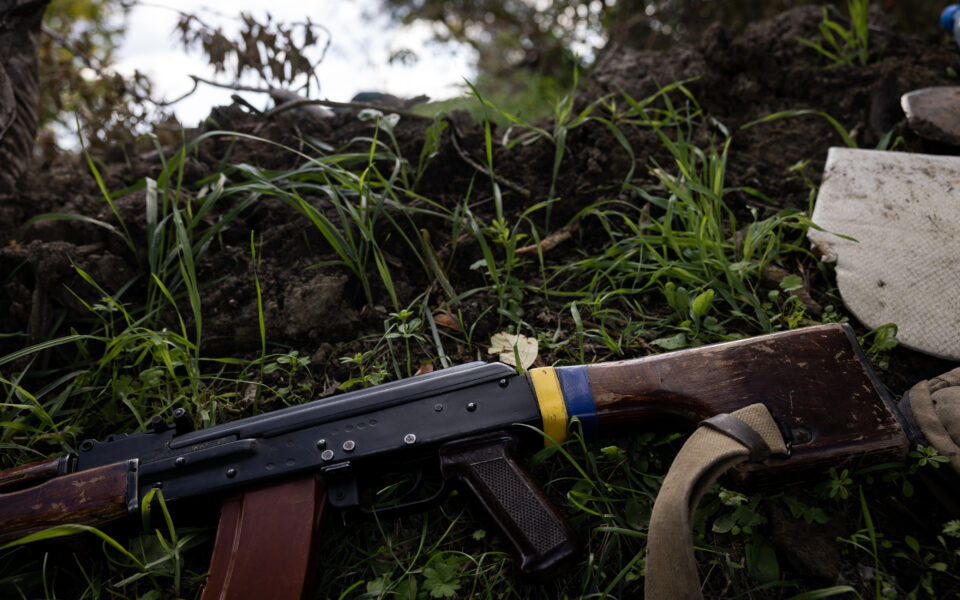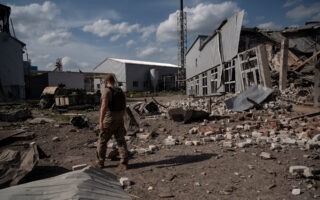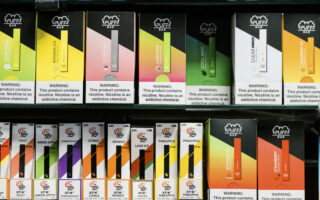The hunt to arm Ukraine leads to difficult choices

The Russian strikes that hit civilian targets across Ukraine this week immediately brought new pledges by Ukraine’s allies to send in more weapons and ammunition. The United States promised more air defense missile systems, and Germany said it would send similar defenses “in the next few days.” The NATO chief declared that support to Ukraine’s fight against Russia would continue “for as long as it takes.”
But for all of the assurances, there remains a problem. Ukraine also needs more of the Russian-style weapons that its military is trained to use, and the available global supply of them is running low.
To find those weapons, the United States and other allies have been scouring the globe, looking for willing suppliers in a hunt that has revealed both the promise and pitfalls of unlocking stockpiles of Russian-standard and Soviet-style weapons for use by Ukraine.
There have been some successes. Finland, which has long balanced the sensitivities of its Russian neighbor, is sending Ukraine some Soviet-style weapons, including ammunition and guns compatible with the AK-47 assault rifle. South Korea is supplying ballistic vests, helmets, medical equipment and other defense assistance.
Others like Cambodia, Congo, Rwanda, Mexico, Colombia and Peru have received a recent visit from Secretary of State Antony Blinken in a painstaking, behind-the-scenes diplomatic campaign to countries that have demonstrated support for Ukraine but are still reluctant to supply lethal aid.
And then there is Cyprus. It has presented a special window on the difficulties of keeping up with the urgent demand for arms that Ukraine’s troops are burning through faster than can be supplied as they claw back large swaths of territory and push the Russians to retreat.
Until this month, Cyprus had been under a US arms embargo for 35 years, imposed to help tamp down tensions after a conflict left the island bitterly divided between a government backed by Greece and a portion still controlled by Turkey – both NATO members.
In that time, Cyprus turned to the Soviet Union and then Russia for weapons and military equipment. Today its stockpile of at least 10 Tor and Buk missile systems that can down Russian aircraft, drones and cruise missiles could provide a bonanza for an embattled Ukrainian army.
But the Cypriot government has made clear it wants new and better replacements, something that could antagonize Turkey and reignite an arms race in the still unresolved conflict. Even so, on October 1, the Biden administration formally lifted the embargo, allowing Cyprus to buy American weapons.
US officials said the move was several years in the making and broadly intended to pull Cyprus away from Russian influence. But one US official, speaking on condition of anonymity to describe the delicate diplomacy, said Cyprus was now “a potential option” as a supplier to Ukraine.
Cyprus “would be ready to consider” transferring some of its weapons and ammunition to Ukraine if they were “replaced with other military apparatus of equal power and capabilities,” Marios Pelekanos, a government spokesperson, said in a statement to The New York Times.
He cited numerous meetings with US officials in recent months, during which “we have also discussed this possibility.”
Already, President Recep Tayyip Erdogan of Turkey has pledged to reinforce his troops in northern Cyprus with additional weapons as the US embargo is lifted.
State Department spokesperson Ned Price said Tuesday that “we welcome additional contributions to provide Ukraine with the continued support it needs to defend itself” but would not discuss diplomatic conversations with specific nations, including Cyprus.
On Monday, President Volodymyr Zelenskyy of Ukraine called on allies to speed air defense systems to his country as “currently the No 1 priority.” Already, NATO nations have committed to sending Ukraine billions of dollars in sophisticated Western weapons – including about $17 billion from the United States alone.
Russia is responding by buying artillery from North Korea and, notably, military drones from Iran, which have blitzed southern Ukrainian cities and last week struck a town about 50 miles outside Kyiv, the capital of Ukraine. Dozens of countries have sought to remain neutral, including China and India, which are Russia’s two largest weapons customers but which Monday renewed calls for de-escalation after Moscow’s missile strikes.
Eastern European nations, many of which were once satellites of the Soviet Union but are now NATO members, have eagerly sent Russian-standard equipment to Ukraine since February: tanks and artillery munitions from the Czech Republic, howitzer guns from Estonia, helicopters from Latvia and Slovakia, and amphibious infantry combat vehicles and thousands of 122 mm-caliber Grad rockets from Poland.
As of Tuesday, the latest data available, Poland was the fourth-largest contributor of military aid to Ukraine, following the United States, Britain and the European Union, according to a database of public commitments compiled by the German-based Kiel Institute. But Poland, like other Eastern European nations, cannot spare its remaining stockpile of Soviet-style weapons without risking its own defenses and wants to see other countries step up, a Polish defense official said.
Talks among allies to share parts, ammunition and other equipment, and to prod defense manufacturers to ramp up production are continuing, including this week at a high-level meeting at NATO headquarters in Brussels. But weapons contracts can take months, if not years, to complete.
Jens Stoltenberg, the NATO secretary-general, said Tuesday that the defense ministers would be asked to decide how best to quickly replenish member states’ stockpiles while still providing Ukraine with a range of weapons – not just air defense systems, he said, but also more artillery, armored tanks and ammunition.
“They need almost everything, and allies are providing unprecedented support,” Stoltenberg said in Brussels.
A possible blueprint for helping Ukraine acquire more arms was provided in July by the Foundation of Defense of Democracies, a Washington think tank, which identified 23 non-NATO nations that have a combined stockpile of more than 6,300 post-Soviet and Russian-standard weapons systems and ammunition, and have condemned Russian President Vladimir Putin’s invasion.
Among the potential suppliers, Cyprus stands out.
With its Russian-made rocket launchers, surface-to-air missiles, helicopters, tanks and armored vehicles, Cyprus holds “the very systems that Ukraine needs to support its counteroffensives, and to hold the territory that they retake – and, more broadly, to defeat Putin’s invasion of Ukraine,” said Bradley Bowman, a former US Army officer and senior military expert at FDD who co-authored the analysis.
Before the embargo was lifted, Bowman noted, “even though there had been discussions, we could never seriously contemplate replacing these Russian-origin weapons, that Cyprus could transfer to Ukraine, with American systems.”
“But now we can,” Bowman said. He added, “We need to look under every possible rock.”
Cypriot officials hailed the embargo’s lifting as an important step toward strengthening ties with NATO and bolstering security in the eastern Mediterranean Sea.
But, they said, it did not mean Cyprus was ready to send its Russian weapons to Ukraine.
“Given the serious security threats posed on a daily basis by the Turkish occupation forces, the current security architecture of Cyprus ought to remain intact,” Pelekanos said.
Acknowledging Cyprus’ “legitimate security concerns,” Bowman said the lifting of the arms embargo would also allow other Western nations to quickly transfer their US-made weapons to Cyprus without first obtaining approval from Washington. That, he said, could replenish Cyprus’ arsenals with newer, NATO-compatible systems if it transferred its post-Soviet arms and ammunition to Ukraine.
At that point, Cyprus might be in a position to help – even if it remains unclear who might be willing to pull from their own arsenals to backfill the country.
Eventually, it is expected that Cyprus will phase out its current weapons with systems that are compatible with NATO, pulling away from Russia and manufacturers in other rogue states.
Yet defense contractors in the United States and Europe are already struggling to keep up with demand in weapons production – a process that can take years.
In the meantime, the US official said, Ukrainian forces need the weapons “right now, more than ever.”
This article originally appeared in The New York Times.






